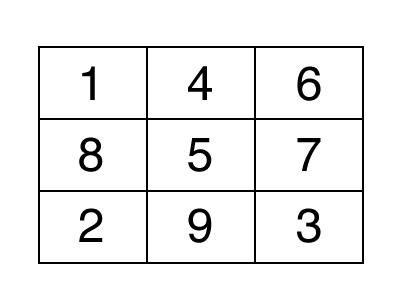Hundred by Thomas Snyder

or solve online (using our beta test of Penpa-Edit tools)
Theme: Unique Digits
Author/Opus: This is the 250th puzzle from Thomas Snyder, aka Dr. Sudoku.
Rules: Add digits to some cells so each cell contains a one- or two-digit number. The sum of the numbers in each row and in each column must be 100.
Answer String: Enter all numbers including the new and given digits from left to right, starting with the top row, then the middle row, and then the bottom row. Separate each row with a comma. (For example “123454,362737,52399”.)
Time Standards (highlight to view): Grandmaster = 1:30, Master = 3:00, Expert = 6:00
Solution: PDF
Note: Follow this link for other less common Number Placement puzzles.

Nice puzzle! Is this a new puzzle type? It seems to me like the possibilies for interesting puzzles are quite limited. This one felt tricky at the start, but after testing whether a few numbers could have numbers before or after them quickly led to contradictions.
It is a known style [edit: originally from Vladimir Potugalov](I first remember encountering it as C-Note from Erich Friedman, and it has appeared on a few WPC/USPC competitions). It is not a very deep style, and is probably well explored with only about ~10 examples. [I do rate puzzle styles based on how many instances you need before you have seen all the kinds of logic you’ll ever need, and ~10 is my lowest rating.]
Still, for a “sum” based week this seemed a good one-off puzzle to attempt a sudoku-like theme which I’d never seen someone try in a Hundred/C-Note puzzle before.
I think the first example of this puzzle was published in Forsmarts Puzzle Book: http://forsmarts.com/pdf/fpb_02.pdf
And then it appeared at WPC-2006.
Thomas,
I came up with the idea for this puzzle in 2006, for WPC in Borovets. Also I included it in one of my PuzzleBooks (http://forsmarts.com/pdf/fpb_02.pdf). I remember being pretty sad when this type appeared few years later in some tournament under the name C-Note 🙂
Thanks for clarifying the history Andrey and thanks for inventing Vlad. I’ve edited my earlier comment.
I think you need to clarify the entering solutions step. I entered the digits I added, not the full numbers (that is, each row had 3, not 6 numbers, when I entered it). I wondered if I had possibly done it wrong (as I didn’t uniquely add every number from 1 to 9; and that wasn’t explicit or implicit in the instructions), but then decided, well, what if I entered all the 2-digit numbers instead, and I did have it right.
Thanks Deanna. I’ve added a clarifying example string from a hypothetical solution that hopefully makes this more foolproof. The one-off styles like this are tricky to set up 100% right.
An elegant little puzzle, though I can see why the type doesn’t turn up very often.